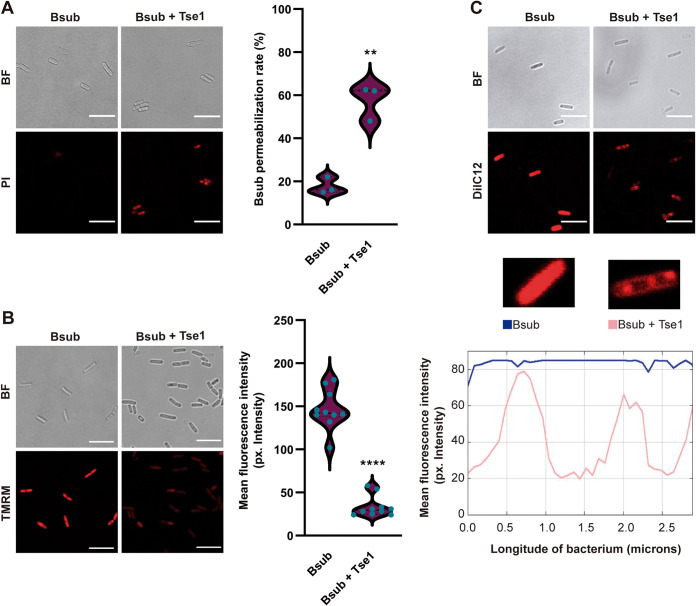FIG 4.
Tse1 affects Bacillus membrane integrity. (A) CLSM of propidium iodide-stained Bsub cells revealed increased membrane permeability in Tse1-treated Bacillus cells (right) compared with untreated cells (left). The number of CLSM fields analyzed to calculate the number of permeabilized cells of the total of cells in the field was 3 for Bsub treated with Tse1 and for untreated Bsub. Bars, 7 μm. (B) Quantification of the fluorescence signal obtained after TMRM staining and CLSM showed a significant decrease in membrane potential in Tse1-treated Bsub cells (right) compared with that in untreated cells (left). The number of cells examined over three independent experiments to measure fluorescence intensity from TMRM staining was 10. Bars, 7 μm. (C) (Top) Staining with DiIC12 and CLSM revealed higher membrane fluidity in Tse1-treated Bsub cells (right) than untreated cells (left). Bars, 7 μm. (Bottom) Representation of the plot profile of DiIC12 in untreated Bsub or Tse1-treated cells showing the DiIC12 distribution along a bacterium. The blue line represents the mean fluorescence intensity at each point of a single Bsub cell, and the pink line represents the mean fluorescence intensity along a single Tse1-treated Bsub cell. Experiments were biologically repeated at least three times with similar results. Statistical significance in the TMRM and PI experiments was assessed via t tests. **, P < 0.01; ****, P < 0.001.

